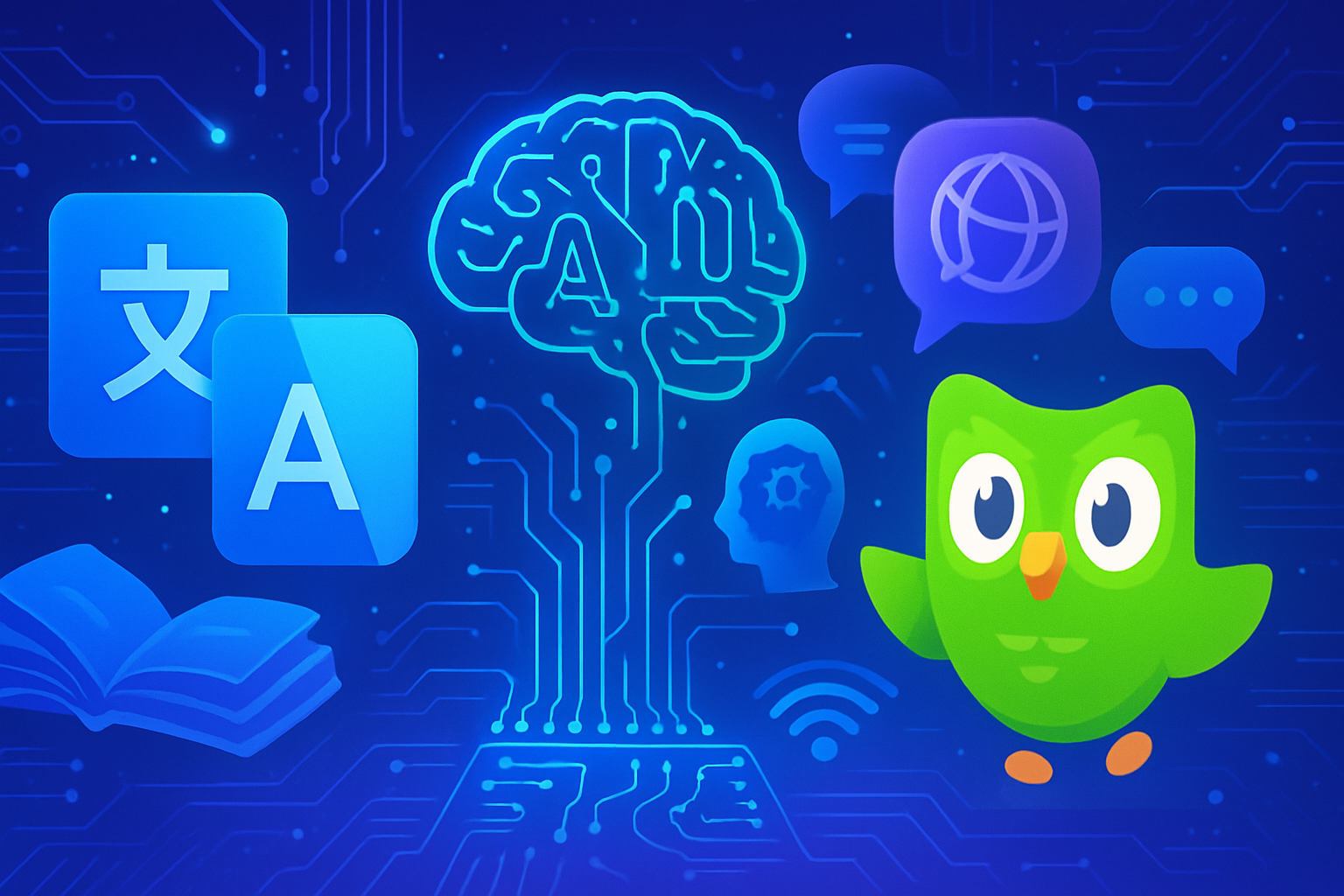Google Translate is profoundly transforming its approach with the integration of a *new artificial intelligence*. This strategic change aims to *challenge* Duolingo’s hold on language learning. The new features of the tool allow users to experience *interactive* and *tailored* learning to their linguistic needs. *The opportunity for improvement** in language learning lies here. Users will benefit from a set of tools that integrate conversation and personalization, making learning both *accessible and appealing*.
Google Translate ventures into language learning
The recent update of Google Translate transforms this tool into a powerful ally for language learning. With Gemini, the artificial intelligence developed by Google, the app aims to compete with established platforms like Duolingo.
Innovative new features
Google announced via a blog post published on August 26 the gradual rollout of two major features. The first is the “ Conversation ” mode, allowing two people who do not share the same language to discuss in real-time. Users will only need to select the “ Live Translation ” tab to benefit from this service.
In this mode, users will receive vocal translations of their exchanges in their respective languages. Transcriptions will appear on their device screen, facilitating communication. Currently, more than 70 languages, including French, Tamil, and Arabic, are compatible, although this option remains exclusively accessible to users in the United States, Mexico, and India.
A tailored learning tool
The second feature, titled “ Practice ”, aims to provide personalized aid in language learning. By using the capabilities of Gemini, this section will generate exercises tailored to each user’s level in the selected language. The generative AI will create comprehension exercises that evolve with the learner’s progress.
For now, this option is in beta and is limited to English speakers learning Spanish and French, as well as Spanish, French, and Portuguese speakers wishing to improve their English. This tailored approach could quickly attract those seeking an alternative to Duolingo.
A serious competitor to Duolingo
Although Google Translate stands out for having a less playful interface than Duolingo, it offers a major advantage: complete free access to all of its features. This free service makes Google’s offering an attractive option for many learners, especially in a context where the pragmatic approach to learning is drawing more and more users.
Duolingo, with its gamified approach, could soon face a serious competitor. Google Translate, traditionally seen as a stern tool, is evolving into a true additional teacher in the field of languages.
Towards new horizons for artificial intelligence
The advancements in artificial intelligence continue to redefine the landscape of digital tools. How will this transformation create new opportunities for learners and professionals? As AI is integrated into many technological solutions, companies like Google are positioning themselves strategically. To explore this topic further, check out this article on AI in cybersecurity.
This revolution in translation and language learning applications is just beginning. The innovations promised by Google and other players in the sector herald an exciting future for language education.
FAQ on Google Translate and its new language learning features
What are the new features of Google Translate for language learning?
Google Translate introduces two new features: a “Conversation” mode for real-time chatting and a “Practice” tab that offers personalized training exercises based on the user’s level using the Gemini artificial intelligence.
How does the “Conversation” mode of Google Translate work?
The “Conversation” mode allows two people speaking different languages to communicate. By using the “Live Translation” option, users hear vocal translations in their language, accompanied by transcriptions on their phone’s screen.
What languages are available in the “Conversation” mode?
The “Conversation” mode includes more than 70 languages, including French, Tamil, and Arabic. Currently, it is only accessible to users in the United States, Mexico, and India.
How is the “Practice” tab different from the Duolingo app?
While Duolingo offers a playful approach to language learning, the “Practice” tab of Google Translate generates personalized exercises tailored to the user’s level, making learning more specific and targeted.
Who can currently access the “Practice” tab?
Currently, the “Practice” tab is in beta and is only open to English speakers learning Spanish and French, as well as Spanish, French, and Portuguese speakers improving their English.
Is Google Translate free to use for these new features?
Yes, all the new features of Google Translate, including the “Conversation” mode and the “Practice” tab, will be completely free, making it an attractive option compared to paid methods.
How does Google Translate compare to other language learning tools like Duolingo?
Although Google Translate may seem less playful than Duolingo, it offers advantages such as free access and the power of artificial intelligence to personalize the learning experience.






